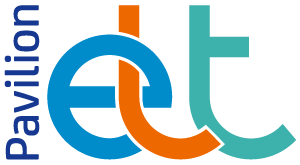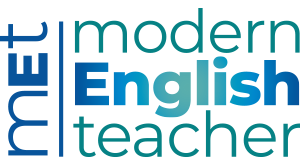Five things you always wanted to know about digital literacies (but were afraid to ask)
In this series, Nicky Hockly explains aspects of technology which some people may be embarrassed to confess that they don’t really understand. In this article, she explains what digital literacies are.
1. Digital literacies … why not ‘literacy’?
Basic literacy means being able to read and write. But in our increasingly digital world, simply knowing how to read and write in the traditional sense is not enough. Technology has brought a wealth of information and opportunities to us in digital format. Of course, we still need to know how to read and write, but we also need a wider range of digital competences or ‘literacies’ if we are to fully participate as digital citizens in the 21st century.
2. What exactly does ‘digital literacies’ mean, then?
Essentially, digital literacies is an umbrella term for a range of skills: not just technical skills, but also a keen awareness of the social practices surrounding the appropriate use of technology. Here’s a simple example. Let’s imagine that we need to create a worksheet with images in a word-processing program for our students. This involves: 1 Knowing how to create a document and how to insert images into it. 2 Knowing what images we can or cannot use. This involves an awareness of copyright and of alternatives such as Creative Commons (http://creativecommons.org/). We also need to know how to attribute a copyright-free image. People frequently think that digital literacies involve only the first point – what we might call the ‘tech’ stuff. But equally important is the second point – what we might call appropriate social practices.
3. Can you give me more examples of these digital literacies?
The example above already includes a number of literacies: you need to know how to work effectively with images and text in a word-processing program to create something (multimedia literacy), and you also need to know how to search for and find appropriate copyright-free images (search literacy). These are just two digital literacies from the whole range that we need. A detailed consideration of each literacy is beyond the scope of this article, but let’s take a brief look at a few of them:
Focus on language: multimedia literacy
Knowing how to understand, critique and produce multimedia is a skill needed to participate fully in Web 2.0, where we are no longer just consumers of media produced by others, but potentially producers too.
Focus on connections: personal literacy
This literacy comes to the forefront in social networking spaces. For example, how do you portray yourself in social networks such as Facebook? How do you manage your online footprint, and shape and project a desired identity in these spaces?
Focus on information: search and information literacies
In many ways, these are two of the most important literacies for any learner to acquire – the ability not only to find information amongst the mass of sites and sources afforded by technologies, but also to evaluate the reliability and veracity of that information.
Focus on (re)design: remix literacy
This refers to the trend of ‘remixing’ pictures, videos and other media to create something new. Understanding ‘remix’ is crucial to an understanding of digital media.
4. What have digital literacies got to do with English language teaching?
Well, everything. Quite apart from the emphasis put on the acquisition of ICT skills in all areas of education in many countries, we are teachers of the language of global communication. And that communication is increasingly digitally mediated. If our learners are to be fully functional citizens in the 21st century, they need digital skills. We can promote these skills in parallel with teaching English. Digital skills and English can help many of our adult learners get ahead in the workplace or prepare our younger learners for better future job opportunities. And equally important, they can make our classes a lot more relevant and interesting in the here and now.
5. How can I bring digital literacies into my classroom?
Incorporating a focus on digital literacies in our English language classes does not mean throwing out everything we’ve done to date and starting anew. Quite the opposite, in fact. English language teaching lends itself extremely well to integrating digital literacies. For example, how about replacing that rather uninspiring coursebook reading with a web page from a spoof site? At the same time as helping our students develop their reading skills, we can help them evaluate the reliability and veracity of online information – a key element of information literacy. How to do this? Choose a website from a list of spoof or bogus sites (eg http://goo.gl/ive5b) and set a reading task. See if your students spot that the site is a spoof, and then analyse the elements that show that it contains false information. These will include not just the content, but possibly the layout, colours and font used on the site (the ‘look’), the lack of links to credible sources, the URL of the site itself, and so on. One of my favourite bogus sites is about the fictional Pacific Northwest tree octopus. You can download a detailed lesson plan on how to use this spoof site with your students from http://goo.gl/bN66W.
Nicky Hockly has been involved in EFL teaching and teacher training since 1987. She is Director of Pedagogy of The Consultants-E, an online teacher training and development consultancy. She is co-author of How to Teach English with Technology, Learning English as a Foreign Language for Dummies, Teaching Online and Digital Literacies. She has published an e-book, Webinars: A Cookbook for Educators (the-round.com), and she maintains a blog at www.emoderationskills.com.
This article first appeared in issue 85 of English Teaching professional, March 2013.


